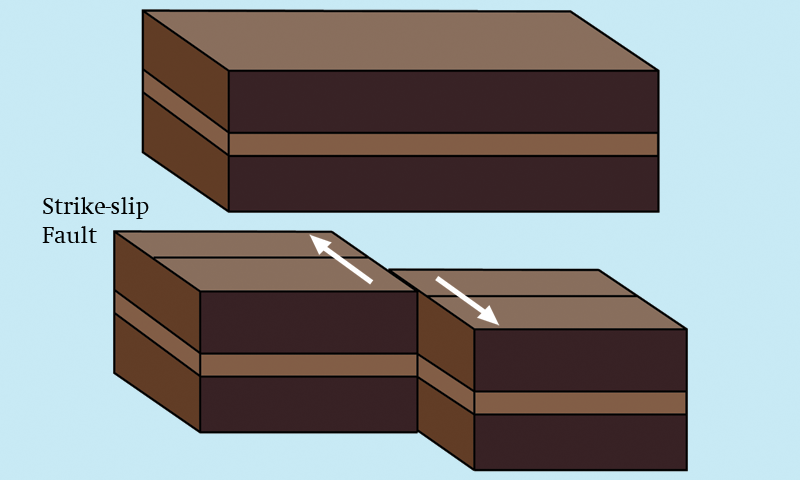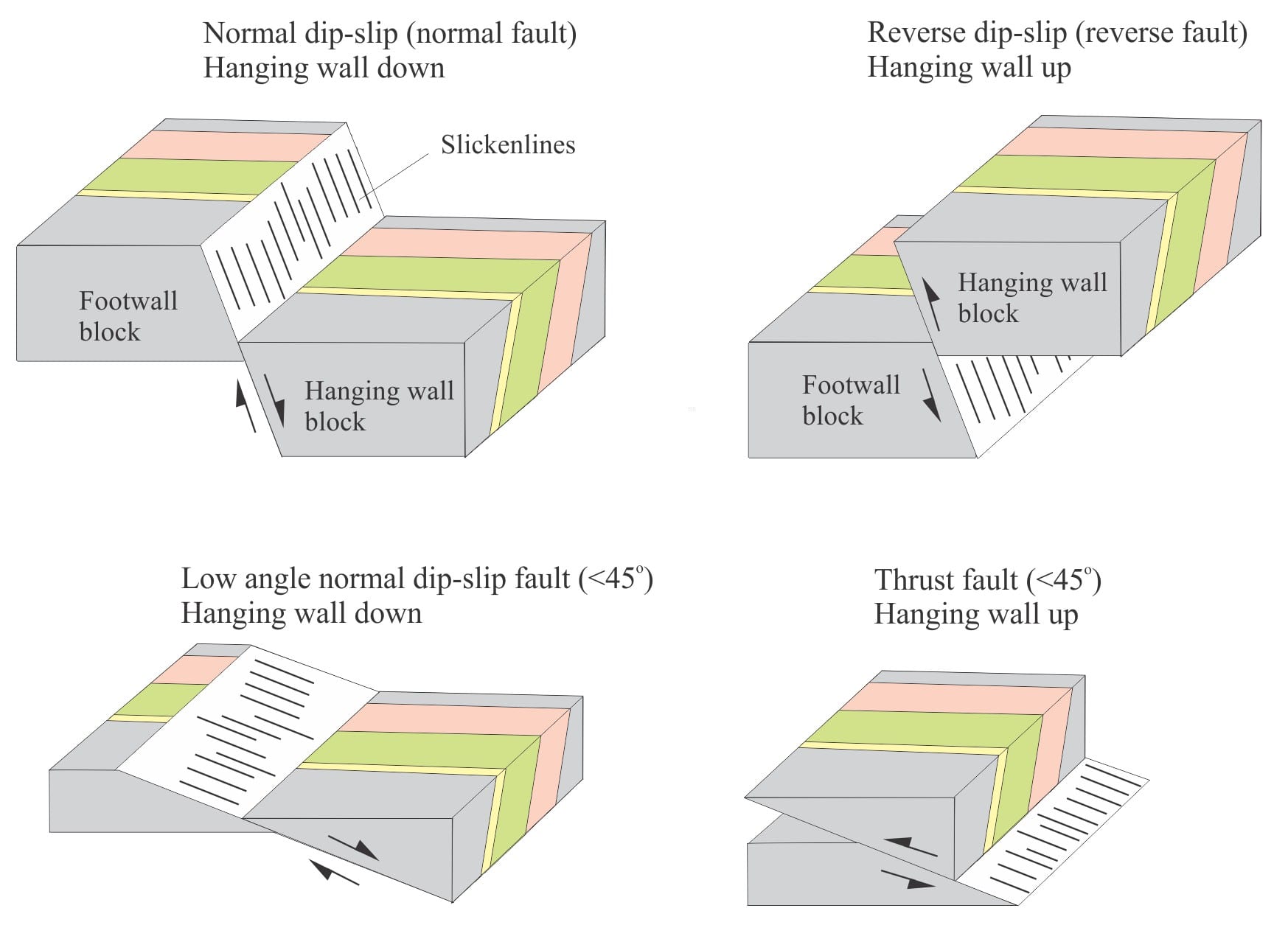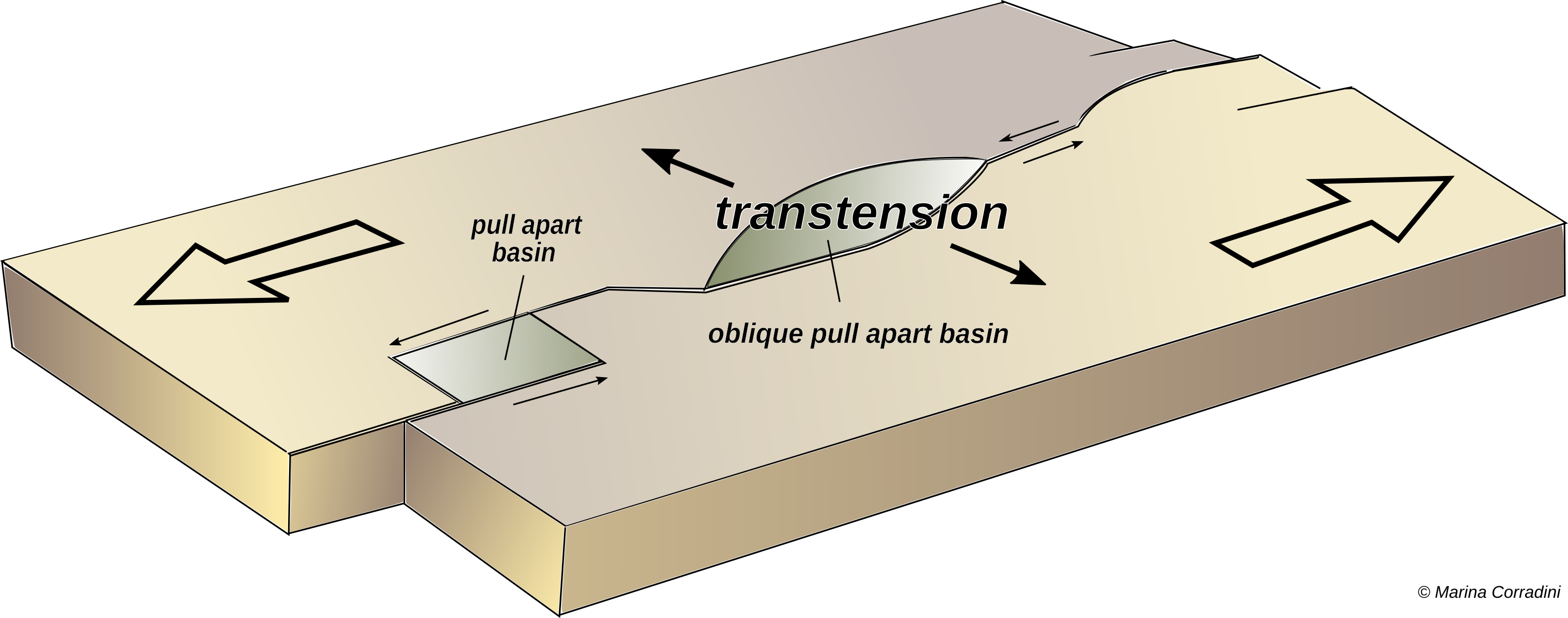
The dip angle of the sliding surface is between 45 and 90 degrees. An inverse fault in which the fault plane is inclined at an angle equal to or less than 45 ° is called a pressure fault.Ī normal fault appears to be that the suspended wall moves downward relative to the foot wall. If the rock mass on a sloping fault moves downward, the it is normally called reverse if the rock above the fault moves upward. The character of the movement (offset) along the fracture plane determines what kind of dip-slip fault it is. There are three types of dip-slip faults: normal, reverse, and thrust. The side where you can hang your feet without touching the floor is the hanging wall. It is simply described here – if a fault plane is exposed well enough to see that it is inclined, the side on which you can stand is called the foot wall. The relative motion of faults (one side to the other) is described in terms of relationship of a hanging wall and foot wall.Ī foot wall is a block under a fault with a sloping fault plane.Ī hanging wall is a block ( rocks) at the top of a sloping fault plane. Faults are separated, bifurcated, converge, or move away from distances, sometimes creating complex fracture systems.

It can be small and large complex interconnection fault systems and can replace one type of fault in one location with another type in another.

Types of faults include strike-slip faults, normal faults, reverse faults, thrust faults, and oblique-slip faults.

If this movement may occur rapidly, it can be causes earthquike or slowly, in the form of creep.
#Left and right strike slip fault crack
Fault is a fracture or crack where two rock blocks slide past one to another.


 0 kommentar(er)
0 kommentar(er)
